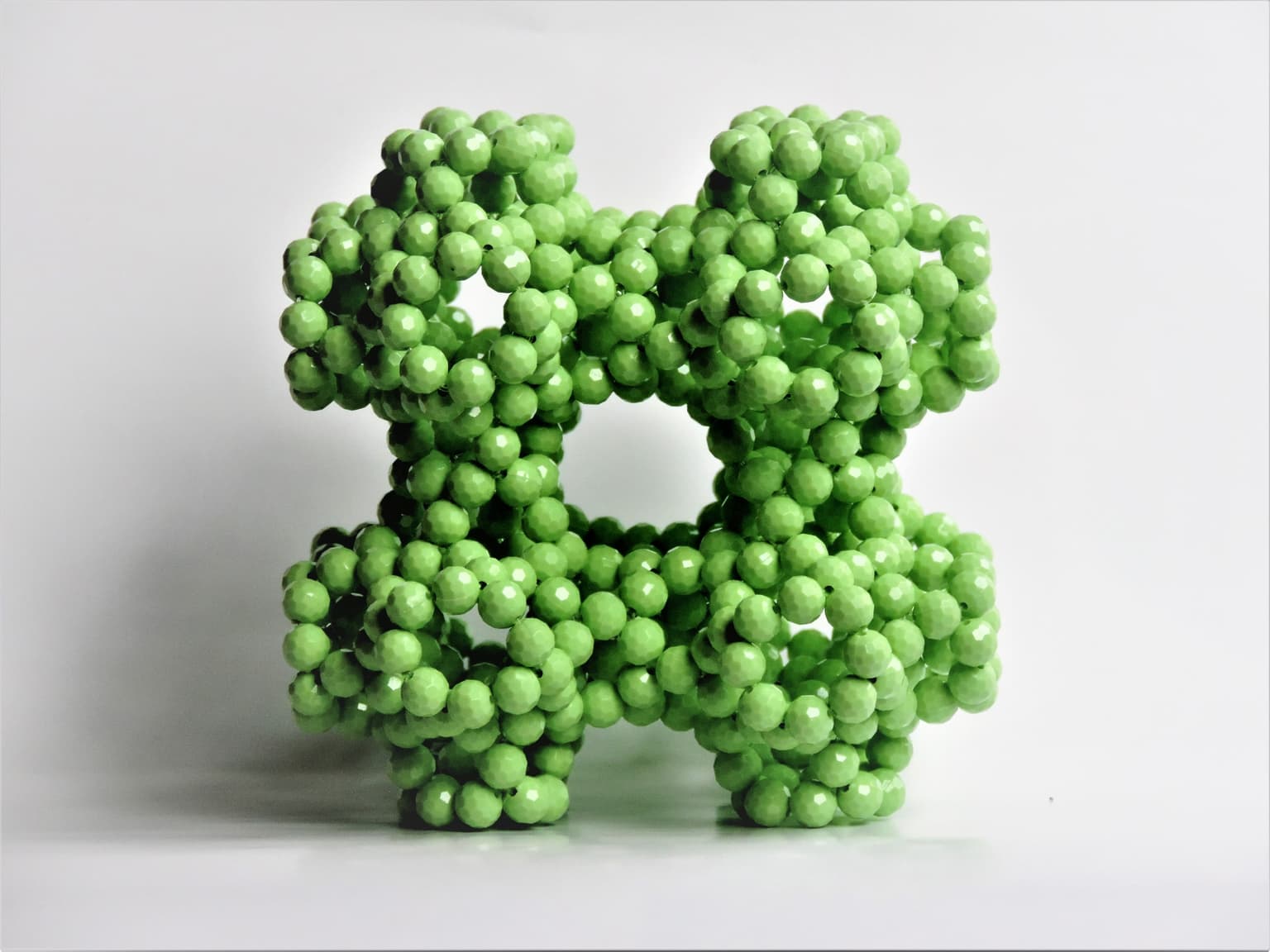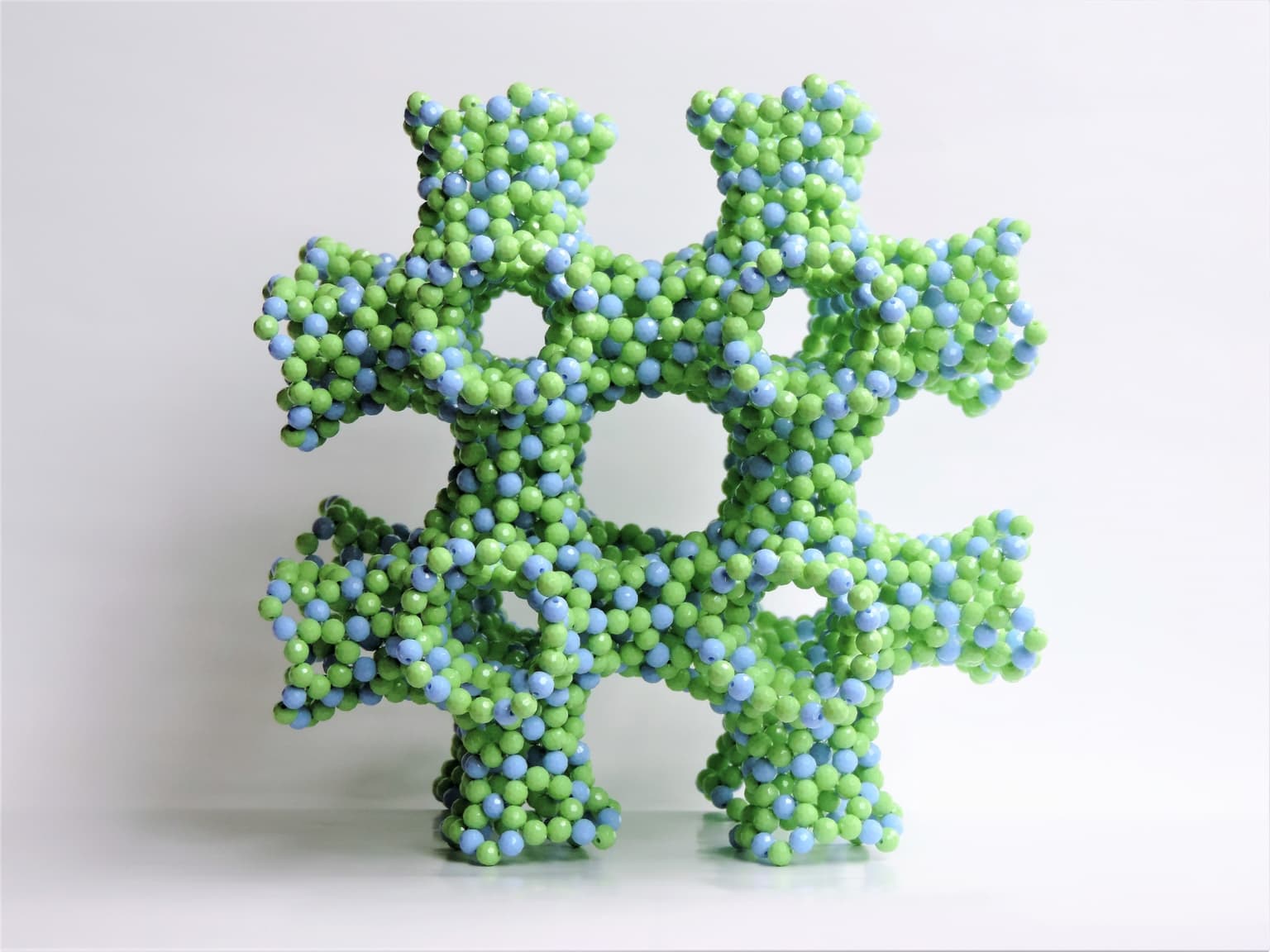Tsai-Jung Liu & Bih-Yaw Jin
Artists
Bih-Yaw Jin
Professor
Department of Chemistry, National Taiwan University
Taipei, Taiwan
Statement
In chemistry, the hard sphere repulsion between beads in beaded models can remarkably mimic the molecular shape of a fullerene, a pure carbon molecule with spheroidal shape, of which the buckyball was the first known example. In the Mathematical Art Exhibition for 2016 Joint Mathematical Meeting, Chia-Chin Tsoo and Bih-Yaw Jin presented two bead models corresponding to hypothetical negative curvature fullerenes embedded in a diamond-like minimal surface. Here we show two allotropes of sp2 carbon embedded on a P-type minimal surface forming with heptagons and hexagons.
Artworks

Bead model for the Klein’s all-heptagon network embedded in a P-surface
16 x 16 x 16 cm
8mm plastic beads
2015
This sculpture represents a physical model of the Klein’s all-heptagon network tessellated in a genus-3 P-type triply periodic minimal surface. It can be specified as by the Goldberg vector (1,0) with every heptagon surrounded by seven heptagons. Each unit cell contains 56 carbon atoms, 84 edges and 24 faces.

Bead model for the hyperbolic buckyball embedded in a P-surface
18 x 18 x 18 cm
6mm plastic beads
2018
By performing a leap-frog transformation on the previous all-heptagon network, one obtains the hyperbolic buckyball embedded in a P-type triply periodic minimal surface. The number of carbon atoms in a unit cell is extended to 168 carbon atoms after a single leapfrog transformation. Blue beads are chosen to represent heptagons, each of which is separated by seven neighboring heptagons by a vector (1,1), or a single carbon-carbon bond, denoted by a pink bead.